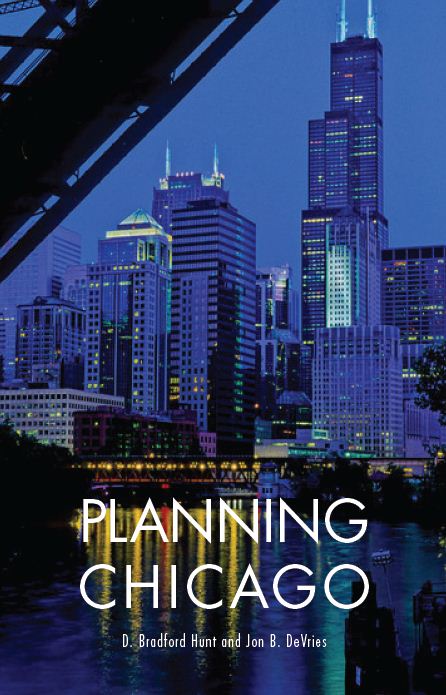Planning Chicago

D. Bradford Hunt and Jon B. DeVries, Planning Chicago (American Planning Association, Planners Press, 2013; reprint Routledge, 2017).
Urban planning might have been born in Chicago (“Make no little plans”), but that was more than a century ago, in a very different city. Today’s city is not the product of Daniel Burnham, the White City, or Mrs. O’Leary’s cow. It’s the Rust Belt Metropolis That Could — the one that has not only thrived but shouldered its way onto the list of global cities. But what did planning have to do with it? Where did planning steer the city right, where did it fail, and where was it ignored? Most important, what does planning have to offer the city today?
In Planning Chicago, Hunt and DeVries tell the real stories of the planners, politicians, and everyday people who shaped contemporary Chicago, starting in 1958, early in the Richard J. Daley era. Over the ensuing decades, planning did much to develop the Loop, protect Chicago’s famous lakefront, and encourage industrial growth and neighborhood development in the face of national trends that savaged other cities. But planning also failed some of Chicago’s communities and did too little for others. The Second City is no longer defined by its past and its myths but by the nature of its emerging postindustrial future.
Planning Chicago looks beyond Burnham’s giant shadow to see the sprawl and scramble of a city always on the make. This isn’t the way other history books tell the story. But it’s the Chicago way.